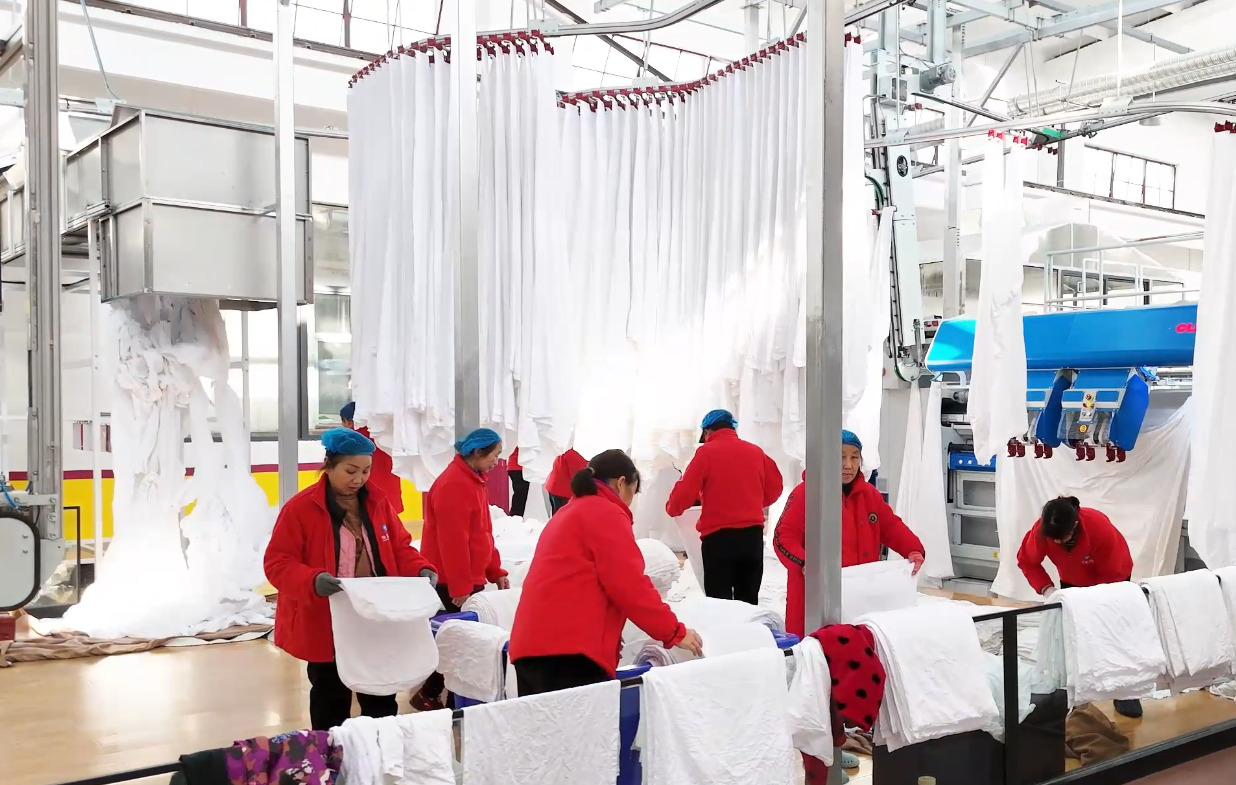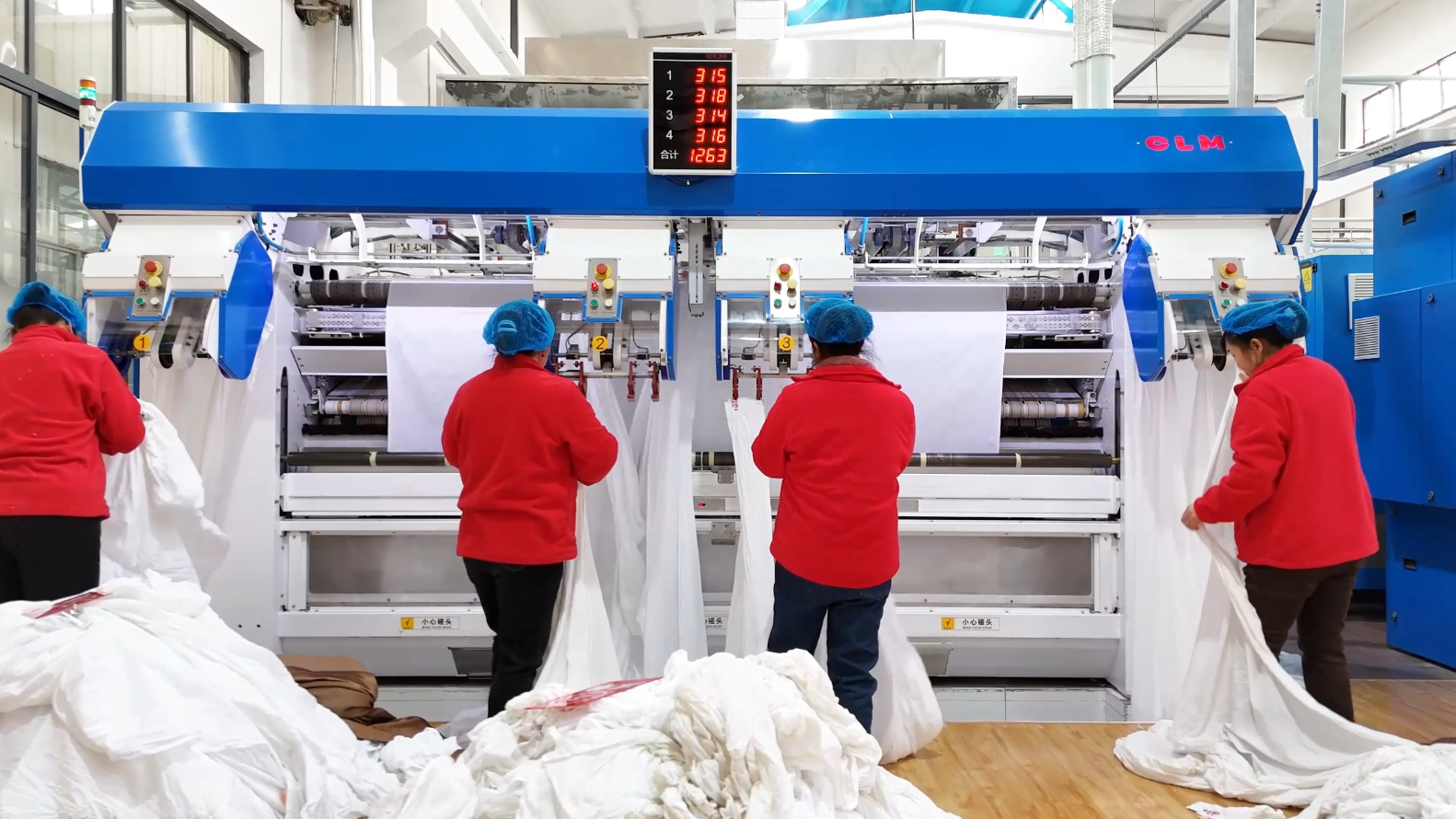In the extremely competitive laundry industry, all the managers of laundry plants are thinking about how to make their laundry plants outstanding and develop steadily. Answers lie in a series of key metrics, which are as accurate as a compass, leading enterprises to the way to success.
Managers have traditionally focused on core data such as changes in washing volumes and cash flows in and out. They are interwoven with the managers’ observations and intuitions to support the business growth planning, risk assessment, and profit estimation. However, if you want to focus deeply on quality, maximize production, and optimize plant operations, this is not enough. You must introduce detailed and specific indicators, accurately measure each production indicator, and find a successful method.
Labor Cost Measurement
Labor is one of the most expensive costs of a laundry plant. Finding ways to measure productivity is important for managers. Laundry plants commonly use PPOH, or hourly output per worker, to calculate the weight of linen handled in a given period divided by the number of labor and hours spent processing it.
This value reflects whether the design layout of the laundry plant is practical, whether the staff management is proper, whether the operating conditions are comfortable and efficient, and whether the work process is optimized. The higher the PPOH value, the higher the efficiency and the corresponding labor cost is greatly reduced. Factories can easily save labor costs by reducing the amount of labor needed to handle the same amount of linen through clever optimization.
Cost of Water and Electricity
When a laundry plant installs new equipment or expands production, electricity and water bills theoretically rise. But is this cost increase due to a rational expansion of production or an unwarranted waste of resources? In order to understand the situation, based on the total weight of linen which is treated, it is particularly critical to calculate the cost of energy, electricity, chemical detergents, and water throughout the plant.
In theory, quantitative resources correspond to washing quantitative towels, but there are often differences in reality. It is possible to track down potential problems by machine type, even accurately to each machine, as early as possible. Many laundry plants go further according to the type of washing statistics. Towels consume far more energy than sheets, and tablecloths use more water consumption than pillowcases.
Such detailed statistics can not only highlight the urgency of recalibrating washing procedures but also flexibly adjust service prices according to cost. When calculating, the machine (or a group of machines) is installed with an instrument to measure the water and electrical consumption of linen during a specific period. The ordinary factory can manually record it. Some advanced machines have their computing system to achieve automated solutions.
As well as calculating the cost per kilogram of linen, the specific machine measurement function can also accurately measure the operating speed. Although each machine has a standard top speed. However, in actual operation, it is interfered with by a variety of factors and often cannot reach the ideal state. This measurement can help laundry plants quickly locate bottlenecks, rationally deploy manpower, and warn of problems in advance.
Falling productivity could mean machines need to be cleaned, staff needs to be trained, or maintenance needs to be scheduled.
● Measurement: Divide the item weight, length (or number of pieces) by the number of hours of operation.
The ability of the tunnel washer is measured by the number of linen transfers per hour (the number of linen cakes produced per hour), divided by the number of linen batches processed over a period of time.
If the result is not ideal, there is a large probability of a bottleneck in the drying link. It is advisable to adjust the linen loading sequence. After all, towel drying takes a long time, and washing too many towels in a row can delay the drying process. In the same way, the capacity of the dryer is quantified by the number of drying cars per hour, and the loading and unloading time should also be counted. By long-term observation, people can find out the time waste point of the dryer.
❑ Ironing Speed
Measuring the performance of the ironer is one of the priorities of a laundry plant. Many laundry plants determine the production capacity based on the ironer, because it is at the end of the production chain, and is often a potential bottleneck.
● Measurement: Divide the number (or length) of linen ironing pieces by the number of minutes required to find the ironing amount per minute
Measuring large and small pieces separately is more accurate.
● The reasons why the measurement fluctuates:
the unstable speed of the linen delivery
Interspersed with manual quality checks
the quality of the linen affects the production capacity
At this time, adjusting the re-washing rate may be able to open a new situation.
❑ Standby Time of Washer Extractor
Although the output of a single washer extractor is important, the standby time (the washing interval between two carts of linen), is the “culprit” that affects the efficiency. This period of washing machine “idle” time is purely an ineffective wait for no money. Most of the washing machines in China rely on manual loading and unloading so optimizing the manpower allocation of the washing area is imminent. Keeping an eye on this metric can motivate you to streamline your processes, increase automation, or invest in efficient tunnel washers to energize your production.
❑ Re-washing Rate
Linen stains vary in degree and rewashing is inevitable.
● The rewashing rate is simple to calculate: Divide the number of dirty linen/returned linen by the total number of washes in a given period and multiply by 100.
It is recommended to control the rewashing rate at 3-5% of the total washing volume. This index is important to optimize washing efficiency.
● The low rewashing rate may be caused by:
excessive washing ( increase the cost of energy and detergents)
No strict quality control (sending the linen that needed to be rewashed to customers)
Solutions: strengthen training, improve quality control
● The rewashing rate is high, and additional costs soar.
If the individual customer linen rewashing rate is prominent, perhaps because the customer is using linen improperly, like wiping the floor with the guest room towel.
Solutions:
Adjust the washing procedure.
Appropriate charges.
Guide the use of special rags to reduce rewashing and wear.
❑ Customer Measurement
In addition to tracking machine performance, many advanced factories also manage linen by customer. While it is possible to weigh batches manually, it is more efficient to use independent linen tracking systems such as RFID (radio frequency identification). In this way, it can not only track the related costs of each piece of linen, including washing water, transportation costs, etc., reduce the difficulty of statistical washing rate, but also add value to rental linen and customer’s linen. The introduction of RFID can quickly and accurately count the received and received goods, and check the leak after washing. There is no hiding of lost or mismixed items.
❑ Return on Investment
Cost is the foundation of business development, and determining return on investment is challenging.
Large machinery investments are driven by many factors:
· Potential energy
· Labor cost savings
· Machine lifespan
· Frequency of failure
· After-sales service costs
· Speed and quality
As we all know, profit goes to zero during downtime. Choosing a proven, reputable brand means the return on investment is more impressive.
Conclusion
Each step of the operation of the laundry plant may seem subtle, but the impact can not be underestimated when several tons of linen are processed daily. Without accurate measurement data, it is difficult to objectively judge the effect of change. Although it takes time and effort to track these indicators, it requires rigorous and meticulous, but there will be a return on investment. The laundry plant will be more streamlined and efficient, the service will be improved, and the road to success will naturally go wider and wider.
Post time: Mar-20-2025




